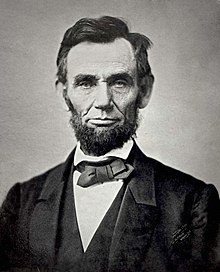Bhaktapur City

The term "Bhaktapur" refers to "The City Of Devotees"
.
Bhaktapur also known as Bhadgaon or Kwopa is an ancient Newar town in the east corner of the Kathmandu, Nepal. It is locates in the Bhaktapur district in Bagmati zone.It is the third largest city in Kathmandu valley and was once the capital of Nepal during the great Malla Kingdom until the second half of the 15th century. The Kathmandu Valley, lies at the crossroads of ancient civilizations
of Asia, and has at least 130 important monuments, including several
places of pilgrimage for the Hindus and the Buddhists.
Bhaktapur is listed as a World Heritage by UNESCO for its rich culture, temples, and wood, metal and stone artwork.
Components:-
1. Physical
2. Biological
3. Socio-economic
Physical:
Bhaktapur occupies an area of around 119 km² at an altitude of 1,401 meters above
sea-level and a population about 72,543 and population growth rate is 2.71%. Bhaktapur district, in which the Bhaktapur city lies, is the
smallest district of Nepal.Bhaktapur is around 13 km east of Kathmandu and lies on the old trade route to Tibet. In the east of Bhaktapur, it lies Kavre, in the west Kathmandu and Lalitpur, in the north Kathmandu and Kavre Palanchowk and in south Lalitpur district respectively. The geo-physical area of Bhaktapur is hilly and valley land.
A street of Bhaktapur
Biological:
Bhaktapur is beautiful biologically.It has moderate type of climate i.e. it is hot and dry in summer maximum 34 DC and cold and dull in winter minimum 0.2 DC. The land types found here are arable lands, jungle and forest, bushes, urbanarea & settlement, pasture land, and rocky surfaces.
The types of spieces found here are many. The animals like koala, dog etc and the birds like eagle, hawk etc. Here, in Siddhapokhari we can find various types of spieces of fish and fry. The forest here is not much dense as compared to other cities of Nepal.
Socio-economic:-
Bhaktapur is known for its heritage sites, traditional art, architecture, historical monuments and traditional pottery.
The largest ethnic group in Bhaktapur is Newar, the indigenous people of
the Kathmandu Valley, and Bhaktapur is also home to the Gurung, Magar,
Chhettri, Tamang ethnic groups. The majority of the Newar people in
Bhaktapur are Hindu. Most people’s livelihoods revolve around farming however tourism and cottage& small industries are also in use. Two distinct socio-economic characteristics of Bhaktapur city are that
it is an agrarian society, and its social order is based on the caste
system. th peole living here speaks nepali, newari, and tamang.Bhaktapur is famous for its pots and delicious curd.
 |
| Tallest Lord Shiva's Statue |
Culture:-
Bhaktapur is rich in cultural heritage and historical monuments. Durbar
Square and Changunarayan temple of this district are listed in World
Heritage and is one of the best places of Nepal for tourism. Nagarkot is
one of famous places of Bhaktapur for its natural beauty and early
sunrise view.Bhaktapur is also known as city of festivals and celebrations. The city celebrates festivals each month starting from new year to the Holi puni at the end of the year like:
- Biska jatra (new year festival)
- Mother's Day (Mathathirtha Aushi)
- Gathamaga charya
- Gaijatra (Guni puni)
- Dashain
- Father's day (Aushi) ETC......
There are many temples which are situated here. Some of them are : Nyatapola, Changunarayan, Dattatraya, Kailashnath Mahadev statue etc which have a lot of religious values as the people living here are religious in nature.it is very nice and lovely place to visit and the place here is beautiful...















